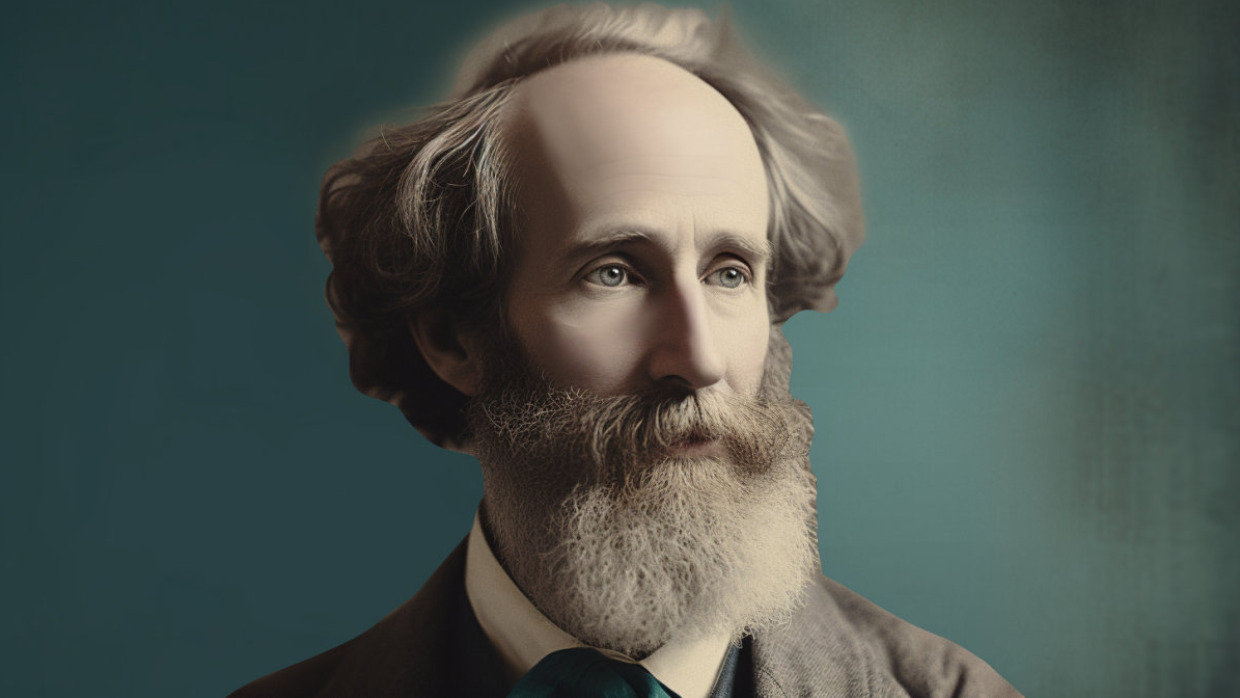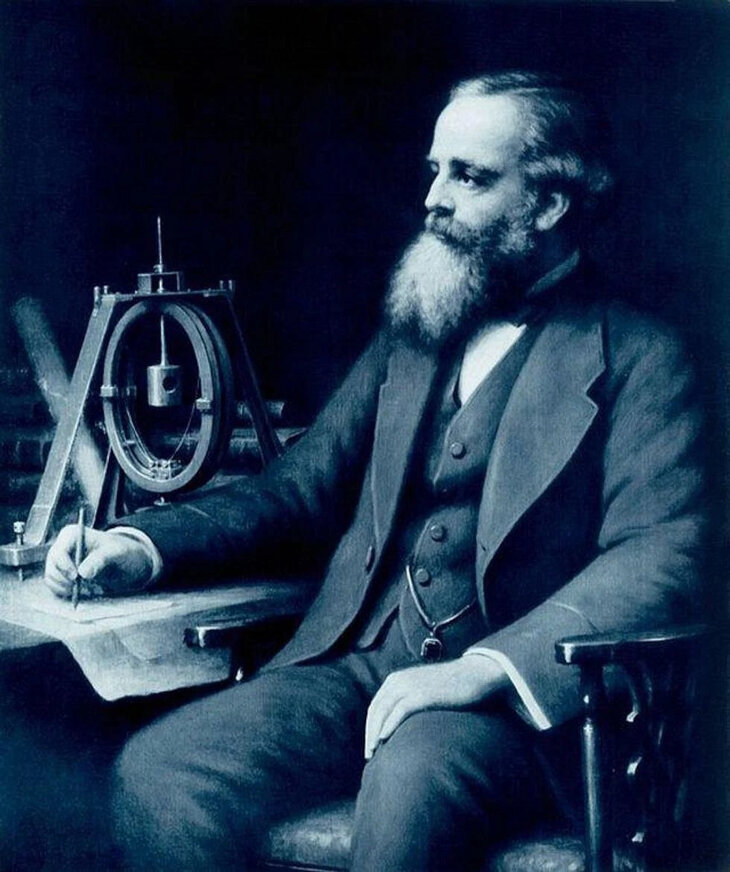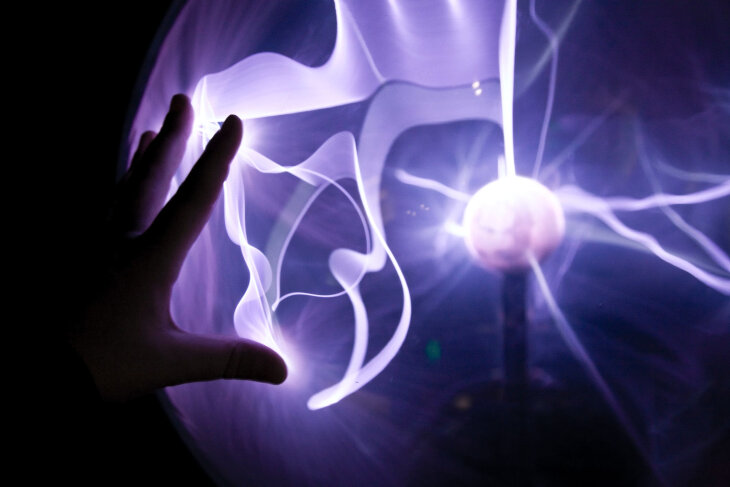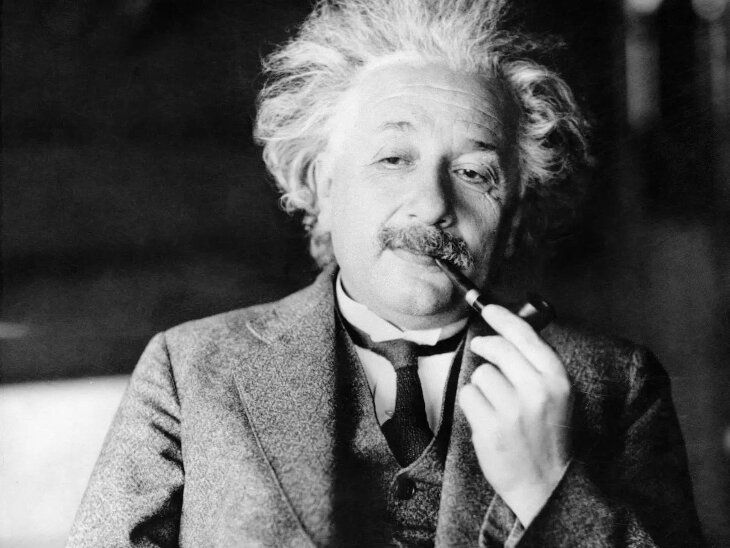 Vampire Weekend's Surprising Jewish Stories
Vampire Weekend's Surprising Jewish Stories


8 min read
The great scientist revealed the interconnectedness of the laws of nature.
The world as we experience it today owes its existence to the scientific insights and vision of the 19th-century Scottish scientist and polymath James Clerk Maxwell. His pioneering work in electromagnetism is the foundation of essentially all of the advanced technology that we enjoy and depend upon every moment—from cell phones and wireless internet to radios, x-ray scanners, satellite communications, microwave ovens, television, magnets in speakers and credit cards, and even the charge in our batteries.
Maxwell was the great unifier of physics, and it was his discoveries that made Einstein's work possible. Indeed, Maxwell was Einstein's "Einstein," and his insights were Einstein's main inspiration.

While Maxwell described physical reality according to mathematical laws in a way that made him appear like a time traveler from the future (since it took decades for scientists to grasp the significance of Maxwell's work), the inspiration for Maxwell's aspiration to unify physics came from a deeper source. For Maxwell, his physics was ultimately an expression of his faith in the One Creator God, who governs the totality of reality through a unified order and law.
In Maxwell's day, the sciences of electricity, magnetism, and light were an incongruous cacophony of disparate voices and ideas. While previous scientists had made numerous discoveries pertaining to the perplexing and curious properties of electricity and magnetism, no one had any idea about what was going on at a deeper level.
Then, in 1861, Maxwell published his paper 'On Physical Lines of Force,' which described the mathematical physics of electromagnetism. Maxwell showed that all the diverse phenomena in electricity and magnetism that scientists had been studying could be succinctly described through a set of just a few equations (which we now call "Maxwell's equations"). Maxwell's four interconnected equations united all the prior findings of Ampere, Henry, Volta, Oersted, Coulomb, Faraday, and others and shed a brilliant light on an area of science that had been shrouded in darkness for centuries.

Realizing that electricity and magnetism weren't two separate, distinct forces but simply two expressions of the same, unified electromagnetic force, Maxwell predicted that electromagnetic fields—in the form of moving waves—travel through space at the speed of light. Having introduced the concept of the field to the analysis of electricity and magnetism and reflecting upon his newly discovered equations that govern electromagnetism, Maxwell immediately realized that the physics of electromagnetism could also be unified with the physics of light.
He discovered that the same equations that govern electromagnetism also govern light and that light—in all its forms, from infrared and UV to radio waves, to microwaves, to the colors of the rainbow—is really waves of electromagnetic radiation. Maxwell demonstrated that magnetism, electricity, and light—three phenomena that appear so vastly dissimilar in the ways that they are manifested—are different aspects of one and the same phenomenon.
In a rare case where theoretical prediction actually preceded experimental observation, Maxwell predicted the existence of numerous types of unknown waves within the electromagnetic spectrum. He also predicted that all such electromagnetic waves could carry information (and even do so in a vacuum).
Maxwell's formulation of electromagnetic theory in differential calculus form and his championing of the field's fundamental nature in contrast to the action-at-a-distance theories of his day would become—and still are—the basis of essentially all of modern physics. While Isaac Newton's discovery of the laws of universal gravitation and motion, in which Earth's gravity was joined with the gravity of the heavens under a single law, is considered the first great unification in physics, Maxwell's equations would become known as the second great unification in physics.
Having revealed the nature of light as electromagnetic waves, Maxwell was also the first scientist to develop a mathematical theory of color and to work out an accurate understanding of how color vision works. Maxwell showed why there is a fundamental difference between mixing paint pigments and mixing colored lights. He demonstrated that mixing paint pigments is a subtractive process, whereas mixing colored lights is an additive process. Paint pigments absorb certain colors so that the color seen consists of those colors which are not absorbed.
In contrast, unaltered colored light from the spectrum of visible light—reaching the eye directly from the source—is pure and unreflected. Maxwell proved that any three colors could be used as primaries as long as white could be obtained as some combination of these colors, and he revealed how the various colors correspond to different electromagnetic wavelengths. Explaining the way that the mixing of colors involves the mixing of different electromagnetic frequencies, Maxwell likewise showed how it is the different wavelengths that cause different colors of light to separate and become visible when passing through a prism.
Having developed a theory of color vision that entails three kinds of color receptors in the human eye—for red, green, and blue light—Maxwell took measurements on a large number of subjects to determine the cause of common types of color blindness. He found that those who are color blind are deficient in one of the three color receptors, usually red. Using his theory of color vision, Maxwell also produced the first color photograph. Taking photographs of an object using separate red, green, and blue filters, he then combined the filtered images by projecting the photographs using the same filters.

According to Albert Einstein, "One scientific epoch ended, and another began with James Clerk Maxwell." To the scientists of his day, Maxwell's equations were mysterious and difficult to comprehend, and it took about thirty years after Maxwell before his equations were generally understood. Consequently, Maxwell's groundbreaking theory had to wait for the next generation of physicists to fully reveal its explanatory power.
As Maxwell's work became better understood, it soon became clear that "he had achieved greatness unequaled" and that his "theory must be numbered among the greatest of all intellectual achievements," as the founder of quantum physics Max Planck remarked. Maxwell's theory would become the prototype for all the great triumphs of twentieth-century physics.
Opening up a new era of physics, Maxwell paved the way for twentieth-century developments such as Planck's quantum theory and Einstein's theories of special and general relativity. "The special theory of relativity," said Einstein, "owes its origins to Maxwell's electromagnetic field equations." When he visited the University of Cambridge in 1922, Einstein was told by his host that he had done great things because he stood on Newton's shoulders; Einstein replied: "No, I don't. I stand on the shoulders of Maxwell."
Maxwell firmly believed that "The God who had revealed himself to Abraham, Isaac, and Jacob was the same as the God of nature." According to Maxwell, the act of God's creation is the presupposition of all science, even though this act of creation itself is not open to scientific explanation. For Maxwell, the divine creation of the universe and of natural law is "clearly evidenced in seemingly inexplicable features of the cosmos such as the identical properties of molecules in all parts of the universe, near and far."
#He believed that the divine image in humanity enabled humans to comprehend that unity and lawful nature of the world.
Uniformity in the natural world and the unity of natural law are simply reflections of the unified will of the one God who brought them into being and who "hast arranged all things by measure and number and weight." Maxwell affirmed that cosmic "uniformity is intended and accomplished by the same Wisdom and Power of which uniformity, accuracy, symmetry, consistency, and continuity of plan are important attributes," and he believed that the divine image in humanity enabled humans to comprehend that unity and lawful nature of the world.
Seeing "every atom of creation as unfathomable in its perfection," Maxwell held that the "ordered uniformity of nature" is a sign of the Creator. For Maxwell, physics revealed a world "in which Wisdom and Truth are supreme, and Power is their minister." The interconnectedness of the laws of nature is a way that God communicates His existence, and it is the unity of laws that reveal this divine communication. Consequently, says Maxwell, anyone who investigates physical laws "will see as he advances that the laws of nature are not mere arbitrary and unconnected decisions of Supreme Power, but that they form essential parts of one universal system, in which infinite Power serves only to reveal unsearchable Wisdom and Eternal Truth."
